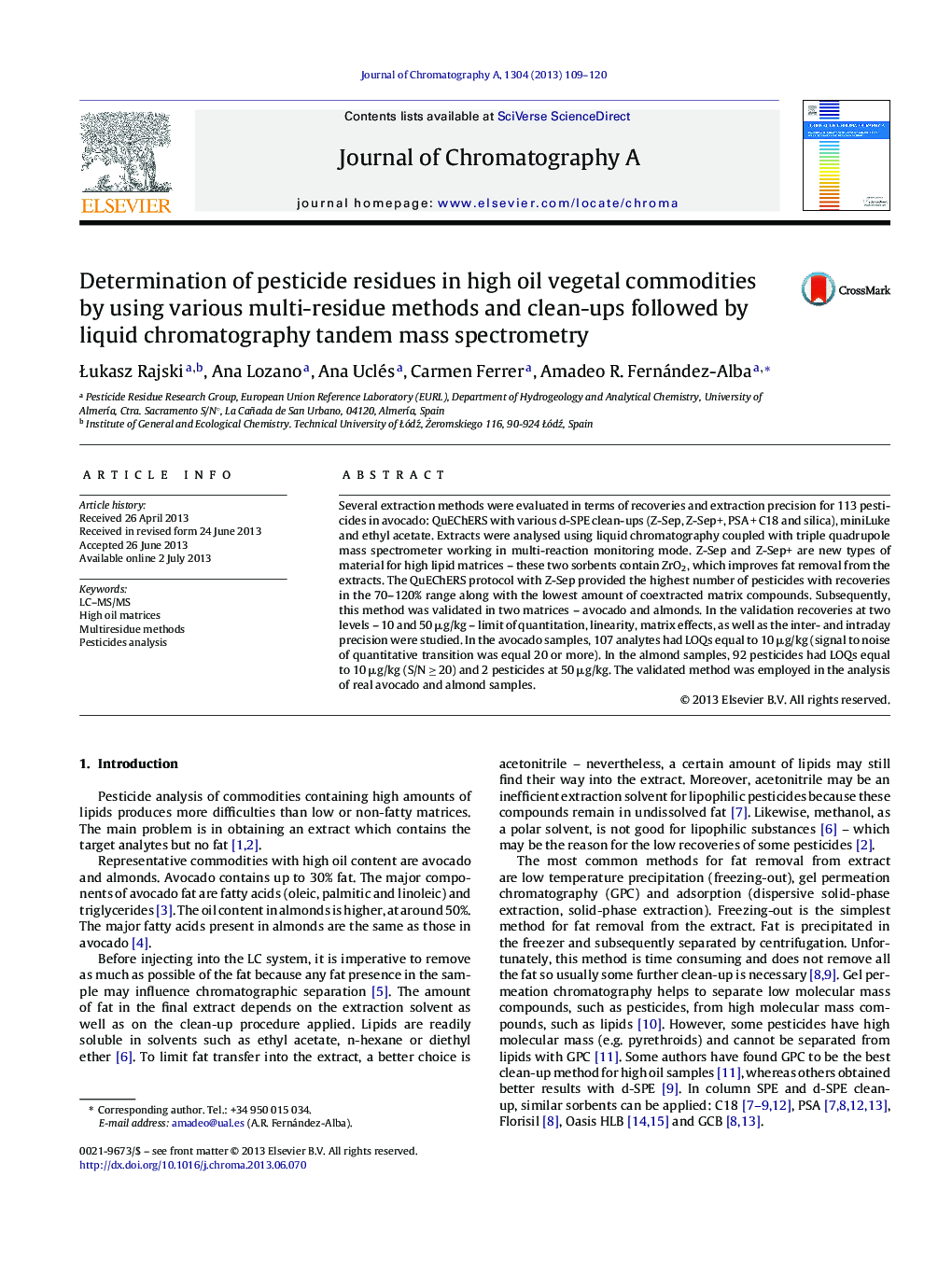| کد مقاله | کد نشریه | سال انتشار | مقاله انگلیسی | نسخه تمام متن |
|---|---|---|---|---|
| 1200571 | 1493622 | 2013 | 12 صفحه PDF | دانلود رایگان |

• Three different extraction protocols were tested for extraction pesticides from high oil commodities.
• Four different clean-ups for QuEChERS were tested.
• Sorbent containing ZrO2 provided the best results.
• Correlation between recoveries and evaporation/reconstitution step was found.
Several extraction methods were evaluated in terms of recoveries and extraction precision for 113 pesticides in avocado: QuEChERS with various d-SPE clean-ups (Z-Sep, Z-Sep+, PSA + C18 and silica), miniLuke and ethyl acetate. Extracts were analysed using liquid chromatography coupled with triple quadrupole mass spectrometer working in multi-reaction monitoring mode. Z-Sep and Z-Sep+ are new types of material for high lipid matrices – these two sorbents contain ZrO2, which improves fat removal from the extracts. The QuEChERS protocol with Z-Sep provided the highest number of pesticides with recoveries in the 70–120% range along with the lowest amount of coextracted matrix compounds. Subsequently, this method was validated in two matrices – avocado and almonds. In the validation recoveries at two levels – 10 and 50 μg/kg – limit of quantitation, linearity, matrix effects, as well as the inter- and intraday precision were studied. In the avocado samples, 107 analytes had LOQs equal to 10 μg/kg (signal to noise of quantitative transition was equal 20 or more). In the almond samples, 92 pesticides had LOQs equal to 10 μg/kg (S/N ≥ 20) and 2 pesticides at 50 μg/kg. The validated method was employed in the analysis of real avocado and almond samples.
Journal: Journal of Chromatography A - Volume 1304, 23 August 2013, Pages 109–120